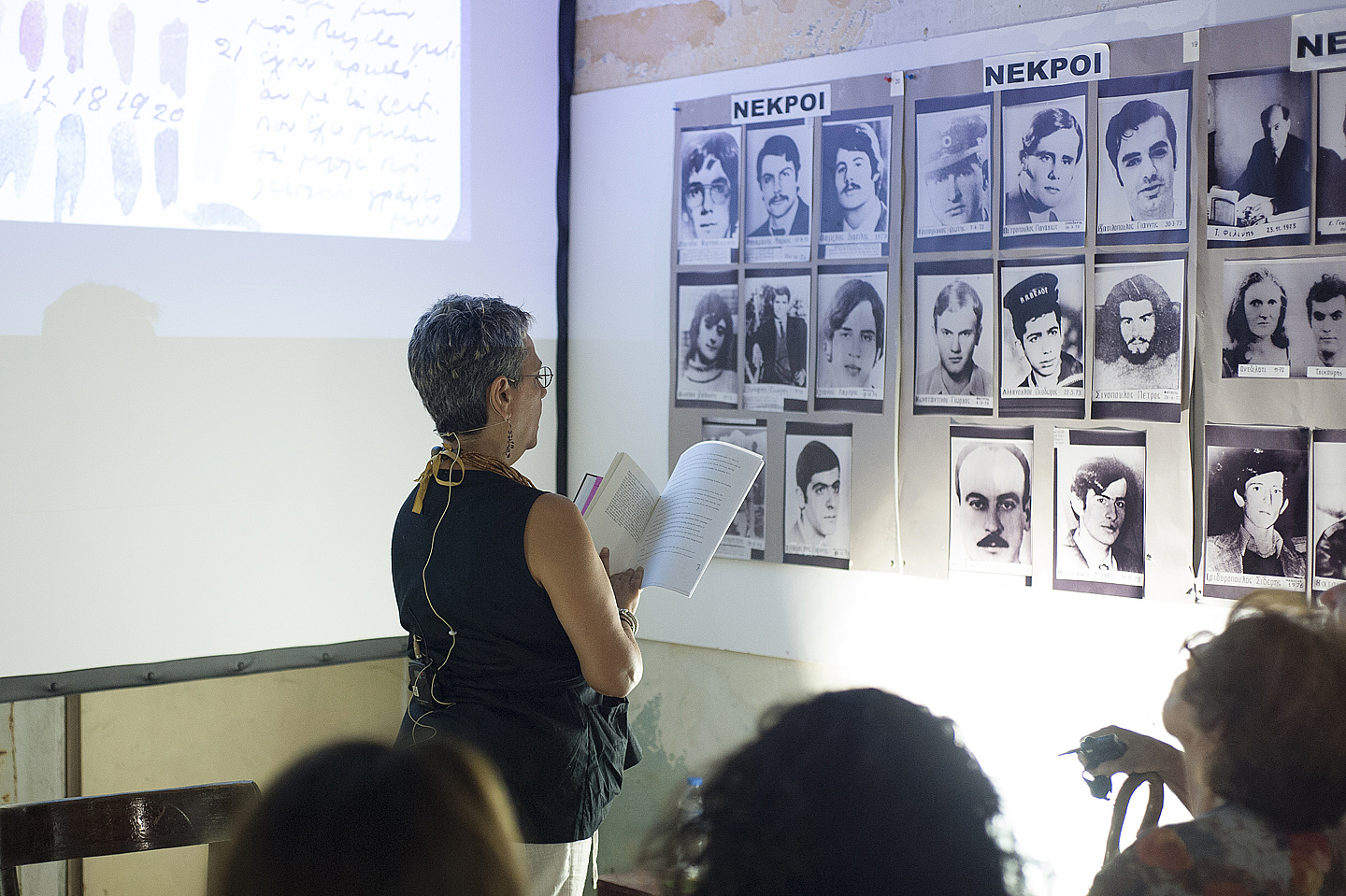
Neni Panourgia, opening of the Public Programs of documenta 14 at Parko Eleftherias, photo: Stathis Mamalakis
Mikhail Bakhtin tells us that the chronotope connects temporal and spatial relationships of language to the ideological and political context that has produced them. Time, Bakhtin says, “thickens, takes on flesh, becomes artistically visible; likewise, space becomes charged and responsive to the movements of time, plot and history” (The Dialogic Imagination). The fleshiness of time encloses the texture of experience: experience of pain, power, abjection, danger, and exclusion. Space indexes time and its content when it acquires them, it is imbued and made to perform dystopisms, whether this happens in the Greek torture chambers of EAT/ESA or Villa Grimaldi in Chile, on the Yugoslavian prison islands Goli Otok and Sveti Grgur, through the stories of the Western Apache mentioned by Keith Basso, or the various Holocaust Memorials and their touristification. What, exactly, becomes the object of the tourist’s gaze when such spaces are touristified (that is, undergo the equivalent of gentrification)? How can the presence of raw power be safeguarded from the brutally leveling effect of the tourist’s gaze?
Neni Panourgia is visiting associate professor of Anthropology at the New School for Social Research (2013–17); senior research fellow at the Institute for Comparative Literature and Society, Columbia University, New York, leading a project on aging, funded by the Andrew Mellon Foundation, and adjunct associate professor at the Psychology Department, Columbia University, teaching in the pilot Master’s Program at Sing Sing, a maximum-security prison in New York State. Her books include Dangerous Citizens. The Greek Left and the Terror of the State (2009) and Fragments of Death, Fables of Identity. An Athenian Anthropography, with George E. Marcus (1996).